FORGE THE THUNDERBOLT! May 3, 2005 Sargeant Scott Stewart saw the tanks first. They were partially hidden in the late afternoon shadows that stretched across the narrow street lined with three-story buildings. The Iraqi T-72 tanks sat nearly side-by-side, the one on the right with its gun tube pointing north, the other close to the curb with its gun tube pointing south, directly at the lead tank in which Stewart was riding. Stewart, only a few months into his job as trigger puller on an M1A1 Abrams, stared into the gunner’s primary sight as his 70-ton tank rounded a corner and slowly moved north through a dingy, dun-colored southern suburb of Baghdad called Mahmudiyah.
“Tanks!” Stewart radioed to his tank commander, S.Sgt. Randy Pinkston. Pinkston, a tall, lanky Texan, was buttoned up inside, peering through the small vision blocks in the commander’s hatch. He could not quite make out the shapes of the two objects in the middle of the street about 500 meters ahead. Pinkston looked down the sights of his .50-caliber machine gun and thought the two indistinct blobs looked more like BMPs, Soviet-made amphibious troop carriers, than T-72 tanks. Whatever they were, they were certainly not friendly. Nothing about this entire city about fifteen miles south of Baghdad was friendly. It was home to a portion of the Medina Division, one of Saddam Hussein’s vaunted Republican Guard units, and the whole city seemed to be dripping with ill-disguised contempt for us as we made our way through the congested streets.
“Fire! Fire SABOT!” Pinkston ordered, indicating to his loader, Pfc. Artemio Lopez, that he wanted a tank-killing SABOT round loaded next. A High Explosive Anti-Tank (HEAT) round was already in the tube. Stewart planted the sight reticle squarely on the back slope of the tank on the right. The gun switch was set to MAIN, the ammo switch to HEAT. When Stewart heard the fire command, he squeezed the triggers on the gunner’s handles and the 51-pound HEAT round rocketed out of the tube at more than 4,500 feet per second. “Contact! Tanks! Frontal! Out!” Pinkston barked into the radio to let all of Charlie Company know that we found the tanks that earlier that day we set out to kill. It was 3 April 2003 and the 3rd Infantry Division (Mechanized) out of Fort Stewart, Georgia, was advancing quickly on Baghdad less than two weeks into Operation Iraqi Freedom. We had already travelled farther and faster than any armoured unit in history, fighting determined Iraqis most of the way, and were now knocking on Saddam Hussein’s palace gates. But first we had to clear pockets of resistance south of Baghdad that we feared would come back to bite us in the butts if we did not render them combat-ineffective, that is to say, kill them.
As commander of Charlie Company of Task Force 1-64 of the division’s 2nd Brigade Combat Team, I was given the job of taking my tank company through the suburb of Mahmudiyah to kill any Iraqi tanks or other armour we found. Charlie was the only tank heavy company in the task force. Alpha Company, a tank company, got a platoon of infantry from Charlie Rock, the mechanized infantry company, and gave it a platoon of tanks. That mixture gave the task force more versatility. But the task force commander, Lt. Col. Rick Schwartz, kept Charlie Company intact. We were to be his knockout punch with our 14 tanks and one Bradley fighting vehicle that served as our fire support vehicle. Through the first two weeks of the war, Charlie Company was often third in the task force line of march. The exception was at our first battle at a place called Objective Rams, where we ran into several hundred near-fanatical Iraqi fighters that our intelligence reports told us were not there. Now we would have another chance to live up to our company motto: “Cobras lead the way.” It was a last-minute mission, but the orders given by Schwartz were clear and succinct: “Find tanks and kill them.” This is what we as tankers train to do: kill tanks before they kill us. We spent six months in the desert of Kuwait getting ready for this.
But the training we did there was for traditional tank warfare, shooting and killing the enemy at distances of 1,500 meters or more. Now we were being ordered to go into a city with restricted manoeuvre areas, multi-story buildings, and tight corners; perfect tank-killing ground for small groups of fighters who knew where the Abrams was most vulnerable. Few Charlie Company soldiers were trained for urban warfare, none in tanks. It was just not something that tankers did. A few of the officers got a quick lesson or two in urban warfare at the Armour Officer Basic Course at Fort Knox, Kentucky. But they were on foot when they did that, not in a tank. Not since World War II had there been tank battles in cities involving American forces. There were tanks at Hue City during the Vietnam War, but that was largely American tanks against North Vietnamese infantry. Tank-on-tank warfare in an urban environment was not something any of us expected to see. Or wanted to be a part of. We were exploring new territory here, literally and figuratively. Even though we did not realize it at the time, we were about to take all the modern doctrine of tank warfare and stand it on its ear. But what we were to discover this day about ourselves, and about how to fight with tanks in urban areas, would help convince division officials just a few days later to make the final push on Baghdad.
And it would set new standards for the use of tanks in a city fight. We got the tank-hunting mission shortly after noon on 3 April. We crossed the Euphrates River about 10 that morning after it was secured by the division’s Task Force 1-15 in what appeared to have been a tough but eventually lopsided battle. Destroyed Iraqi vehicles were scattered all along the eastern approaches to the bridge, many still burning. And the smoking bodies of dead Iraqis littered trenches and bunkers on both sides of the road. Prisoners were still being rounded up as we drove through. By late morning we moved into Objective Saints south of Baghdad and were set up at a crossroads next to a canal in the middle of potato fields. We had little opposition getting there, but at the crossroads found a single soldier with an AK-47 dutifully manning his post. When he raised his rifle to fire at S.Sgt. Jason Diaz’s lead tank, the soldiers killed him with a quick burst from one of the machine guns. We dubbed the crossroads Checkpoint Cobra. It was to be our home for the next few days. Just to our east, in the middle of Objective Saints, the brigade set up shop at the intersections of Highways 1 and 8 leading into and out of Baghdad. Not long after we arrived, Schwartz called me to the task force Tactical Operations Center (TOC) and told me he wanted the company to attack south that afternoon to see what kind of forces were in the area. We were to move out about 1:30 p.m. We were in the lead, with our infantry heavy company, Charlie Company of Task Force 3-15, accompanying us.
To differentiate between the two Charlie Companies, we were known as Cobra; the other was Charlie Rock, or simply Rock. I chose my second platoon to lead the company that day. Normally, my first platoon was my point platoon. I referred to the platoons as Red (first), White (second), and Blue (third). But on this day several of first platoon’s tanks were having mechanical problems and it was not at full strength. Third platoon carried much of the fight in an earlier battle and I wanted to give them a break. It was time for second platoon, under the leadership of 1st Lt. Jeremy England, to lead us into what would turn out to be one of the key battles of the war. When we left on the mission early that afternoon, Cobra was on the right side of Highway 8 and Charlie Rock on the left side of the divided highway. The roads in Iraq can be terribly frustrating for those of us accustomed to some rhyme or reason in our highway systems. You can be driving down an eight-lane divided highway in Iraq and all of a sudden it narrows to two lanes of deeply rutted asphalt. A few miles beyond that it might open back out onto a decent highway or it might just disappear forever. As we drove south on Highway 8, the road began to narrow and peter out. We were getting fired on by an occasional dismounted Iraqi fighter, and every so often a rocket-propelled grenade would be launched in our direction. But enemy contact was generally light and ineffective. I sent England and Pinkston ahead to recon the road when we got to a built-up area north of Mahmudiyah that did not show up on the map. Schwartz made it clear he did not want to get stuck in the city after dark but we also needed to press on with our mission.
“There’s a fork in the road,” England radioed me. “Do you want me to take a right or a left?” The left side looked more troublesome, with three- and four-story buildings and narrow streets where it would be easy for fighters in windows or on rooftops to shoot down or drop grenades on us. “Go right,” I told England. It turned out to be a most propitious decision. We had no satellite photographs of the area and were being guided only by our maps and hand-held Global Positioning System (GPS) devices. Then England came on the radio again: “Sir, the road ends here.” “What do you mean it ends? “It ends. There’s no more road.” I moved up to take a look for myself. It appeared we were in the middle of farm fields. We knew where we were and where we wanted to go; we just were not sure how to get there. The maps and the roads had absolutely no correlation to one another. What was on the map was not on the ground, and vice versa.
As we were trying to figure out how to get back to Highway 8, we were still being peppered by small arms and RPGs. They were more a nuisance than a danger, because we were being fired on from considerable distances. We were in open terrain with a good view of everything around us. When we took fire, we sent it right back, usually in industrial strength quantities, mostly with machine guns. But occasionally, when we spotted a vehicle with weapons, a main gun round would take it out. Finally, England radioed that he saw a bus travelling down a road to the east of our position. It was across an open field, and there were concerns about getting stuck in soft ground. Pinkston’s tank, with Pfc. Justin Mayes in the driver’s hole, plunged ahead and made the crossing first. When he did not get stuck, the rest of us followed.
It was about 3 p.m. when we got back on Highway 8. We knew the headquarters of the Medina Division’s 14th Mechanized Brigade was just a few miles to the south. We were told before the war that this brigade would likely capitulate early in the fighting and its headquarters and armour might be taken without a shot. We even planned an elaborate ceremony with each of the task force company commanders playing a role. But, like so much of the intelligence we received during the war, this also proved faulty.
The task force’s primary mission was to destroy units of the Medina Division and here was a perfect opportunity to do it. But it was getting late in the day and we still had to make our way back through some built-up areas before dark. I radioed Schwartz and asked if he wanted us to continue moving south, or turn around and head back north through Mahmudiyah.
He thought the town was too much of a chokepoint and we ran the risk of getting stuck in there. We were all familiar with the book “Black Hawk Down,” and many of us saw the movie version of what happened to a handful of American soldiers caught in the middle of an unfriendly city and surrounded by thousands of enemy fighters. That was Mogadishu, Somalia, in 1993. This was Mahmudiyah, Iraq, in 2003.We had no desire for a repeat performance a decade later.
As we moved back onto Highway 8, the road made a wide left turn and began pulling us back into built-up, populated areas. Everywhere we looked were photographs and paintings of Saddam. Hundreds of people were in the streets, most of them in civilian clothes, many armed with AK-47s and RPGs. They would spot us, fire off a burst or two, and then run down one of the many narrow alleys to escape our guns. Within minutes of pulling back onto the highway, England saw a man get out of a car with an AK-47 and take aim at his tank. He was quickly killed by machine-gun fire. Another car, this one with six men, stopped not far from Pinkston’s lead tank. The men jumped out and began unloading weapons from the trunk. Pinkston opened up with the .50-caliber machine gun and Stewart with the 7.62mm coaxial machine gun, killing all but one of them at the car. One Iraqi began running for a nearby bunker. He never made it. Stewart walked the tracers up to him and through him, felling him in mid-stride. The farther Charlie Company advanced into Mahmudiyah, the more small arms fire we received. The volume of fire increased from the rooftops and windows of apartment buildings that loomed over us. Some of the tank commanders were still outside their hatches. The vision blocks inside the tanks greatly restricted our view, but with all this overhead fire it was dangerous to even peek out of the hatch.
“Get your ass down before you get shot!” Stewart yelled at Pinkston, who was so concerned about getting stuck in an alley or a side street he did not realize he was getting shot at. After the road made its wide, left turn, it swept back to the right around a corner. Just as Pinkston’s tank turned the corner, Stewart saw the two T-72s. England’s tank was only a few meters behind Pinkston’s but was not yet around the corner when the distinctive hollow “Boom!” of the Abrams main gun echoed among the stucco buildings. That was followed quickly by Pinkston’s spot report of contact with enemy tanks. At that instant England came on the radio to me: “Cobra Six, this is White One. We got tanks!” “What do you mean you have tanks?” I asked, incredulous that we suddenly found ourselves fighting tanks in these tight quarters. The infantry often refers to urban combat as a knife fight in a phone booth. For us, it was more like a gunfight in a phone booth.
I thought he was mistaken and saw BMPs or something else. “I’ve got T-72s in the street!” he shot back. The sound of a main gun round was enough to convince me that he was right. Stewart’s first shot hit the back slope of the T-72 sitting on the right side of the street. The extra fuel drums on back exploded, sending flames and black smoke shooting high into the late afternoon sky. The tank’s turret popped off and the engine was knocked to the other side of the street. The brass AFCAP of the M1A1 HEAT round was ejected from the tube, hit the deflector with a clang, and fell into the catch on the floor. Lopez quickly loaded another round. But instead of the SABOT that Pinkston called for, it was a HEAT.
The SABOT with its depleted uranium penetrator is the round of choice for killing tanks. We started the mission that day with many of the tanks battle-carrying SABOT because we anticipated fighting tanks. When we encountered trucks and bunkers, many tank commanders shifted to HEAT rounds, which are more effective against those targets because of the high explosives content. Now facing tanks, Pinkston’s tank had HEAT more easily accessible in the ready rack than SABOT. Pinkston saw the round go into the main gun’s breech but decided to let it go rather than have Lopez try to remove it and try to dig up a SABOT. There was a second tank that needed to be killed and he did not want to waste any time. But before Stewart could fire the second round, the T-72 on the left fired its 125mm main gun. Pinkston said later he never saw the tank fire, but others behind him did. The round sailed high and to the left of Pinkston, whose tank was still moving forward. It then flew over Sgt. 1st Class Ray White’s tank, which was third in the column, and exploded against a building behind it.
S.Sgt. Ben Phinney, just behind White’s tank, was still out of the hatch. He saw the tank round hit the building, then heard an AK- 47 round bounce off the back of the hatch cover, which was propped open. Sparks from the ricocheting round flew over his head and Phinney and his loader, Psc. Derrick Hemphill, quickly dropped inside the tank. Someone above and behind them was firing and had gotten a bit too close for Phinney’s comfort. He gingerly reached behind him and closed the hatch, buttoning up inside. Stewart fired another HEAT round at the second Iraqi tank. It hit the turret, but there was no massive explosion like the first. England’s tank pulled up close to Pinkston’s. “Alpha section! One round SABOT! Move out and fire!” England ordered. Sgt. Chris Freeman, the gunner on Freeman’s tank, squeezed the trigger and the SABOT round sliced into the second T-72. It exploded in a flash of fire and smoke, sending fragments of steel clattering down the street. England’s loader, Spc. Mark Gatlin, pumped another SABOT round into the breech. At that instant, Pfc. K.C. Brons, the driver of England’s tank, looked to his right. There, in an alley, was another T-72. It was so close he thought he could almost reach out and touch it. The tank was no more than 25 feet from him. He could see the rear slope and the fuel drums stored there. The gun tube was pointing in the other direction and the alley was so narrow the gun could not be traversed left or right.
Brons told Freeman about the tank on the right. Freeman traversed the gun tube in that direction but could not see anything in the sight, even on its lowest magnification, 3-power. The tank was too close for him to be able to clearly identify it as a tank. He could tell he was looking at something metal, but he could not be sure what kind of metal. “Back up!” England ordered when he heard Brons’ pleas. England confirmed it was yet one more T-72. Freeman was not even sure he could shoot from this range. There was nothing in the manuals about it. He had never trained to fire main gun rounds this close to anything, much less another tank. England gave the order to fire, Freeman squeezed the triggers, and the Iraqi tank erupted in a cloud of flame and white-hot debris that rained down on the Abrams.
Ray White’s tank spotted a T-72 in an alley to the left as it pushed north. His gunner, Sgt. Cullie Alexander, fired a SABOT round and that tank virtually disintegrated. Its engine was knocked out of the main body and its turret was popped and sent spinning off into the air. The next day the turret was found nearly 300 meters away, on top of a three-story building. Pinkston kept his tank moving forward through the flames and smoke and the ammunition cooking off inside the destroyed T-72s. This one small section of Mahmudiyah was now a hellish inferno. The heat was intense, the smoke thick and black and greasy with the smell of diesel. And still we could see people standing out in the streets, watching all this happen. The kills knocked the T-72s backward and sideways just enough to give our tanks a path as we continued to push north to link up with a platoon of Charlie Rock, which was waiting at the north end of the city. Pinkston and his crew were finding other tanks hidden in alleys or parked on side streets as they drove on. One tank was even inside a parking garage. Pinkston and England passed the burning tanks and were approaching another corner. As they rounded it, Stewart spotted the front slopes of more armored vehicles.
“I’ve got more vehicles!” he called to Pinkston. Stewart was ready to fire again. Pinkston was ready to give the order. They were not sure what was in front of them. Stewart kept looking through his sight, straining to see if it was enemy or friendly. “No! Wait!” he finally called. “It’s a friendly.” “We’ve got Bradleys in front of us. We’ve got Bradleys in front of us,” Pinkston radioed back. The Bradley fighting vehicles of Charlie Rock came into view. The platoon’s two lead tanks were out of the inferno and into relatively safe terrain. But two of the platoon’s tanks were still back in the city. White’s tank stopped just short of the flames and shot another T-72 off to the right. At least four tanks were burning now, some of which may have been double-tapped by crews that were leaving nothing to chance.
Phinney’s tank was the last in the platoon. Just as Pinkston reported he had Charlie Rock in sight, Phinney looked to his right through the vision blocks and saw two large drums of diesel mounted on the back of a T-72 that somehow the three tanks ahead of him missed. “There’s a tank!” he yelled to no one in particular. Phinney grabbed the manual override on the turret and took control from Ellis, the gunner. He put the gun tube on the T-72, almost literally. The end of the Abrams gun tube could not have been more than five feet from the Iraqi tank. “Are you sure it’s not a Bradley?” Ellis asked. “It’s a tank! Shoot it!” Ellis fired a SABOT round and the fifth T-72 took a fatal blow, this time from point-blank range. Phinney released control of the turret to Ellis as the tank moved on. Pfc. Jeremy Menery, the driver, was manoeuvring around the burning tanks when Ellis came over the radio: “I’ve got another one!” “Are you sure it’s a tank?” Phinney asked. “It’s a tank!” “OK! Fire!” This T-72 was about thirty meters away down a side street. A SABOT round killed it instantly.
I was directly behind Phinney’s tank, looking for targets, as it fired. But the pace of the column was picking up so we could get the company through the kill zone. I spotted one tank in an alley but did not have time to shoot and radioed its location back to third platoon, which was trailing me. One of its tanks killed the final T-72. The entire tank battle in the streets of Mahmudiyah lasted less than five minutes. In that brief span, Charlie Company tankers killed seven T-72s and two BMPs. At times we were firing from point blank range. No one ever heard of such a thing, much less done it. It was like the gunfight at the OK Corral with tank main guns. The fastest gun wins. We did some quick reaction training in Kuwait before the war, but not at these distances. We were practicing at 1,000 to 2,000 meters. Anything else was considered dangerous that close to a tanker. The impact, and significance, of what we did in Mahmudiyah did not begin to sink in until after we got back to Checkpoint Cobra. And for some Charlie Company soldiers, it may be years before they fully understand the importance of that day. It was not so much that we killed tanks in the first major tank-on- tank engagement of the war, but how we killed them. We shot main gun rounds at enemy tanks at distances that would be considered too close for a handgun fight. It was unprecedented. There were no manuals for this, no training programs anywhere to teach a tanker how to go into a city and be able to recognize enemy tanks, instantly react to that contact, and get off kill shots before he has time to realize what was happening.
In some ways we had a bit of luck going with us that day. Because of the direction in which the Iraqi tanks were oriented, we later decided their commanders believed we would be coming in from the north, moving south on Highway 8. Had we done that, we would have driven directly into their guns. And we would have done it if I had told England just a few hours earlier to turn left instead of right. By skirting the city’s west side, we avoided the main avenue of approach and came in from the south, unintentionally catching the Iraqis by surprise. Call it fate, the hand of God, or simple blind, dumb luck, we were in a better position to kill the Iraqis than they were to kill us. But much of that was a result of the quality of Charlie Company’s soldiers, especially the second platoon soldiers who on this day led us through a nasty little fight that could have been disastrous had they not demonstrated the aggressiveness and initiative that they did. I could tell from their radio transmissions they were pumped up and excited. But they never lost their composure and adapted to difficult and dangerous situations quickly and with a professionalism that made me proud to say I was a part of the company.
Pinkston’s crew in the lead tank was especially critical in getting us where we had to go and aggressively engaging the Iraqis so they did not have time to respond to our attack. But all of the second platoon crews and TCs played key roles in this fight. They were able to adapt quickly to a difficult and dangerous situation and kill the enemy before he had a chance to kill any of us. Fighting in these close quarters was not something for which we had been trained, but Charlie Company soldiers responded as if it was something that was second nature. The fight at Mahmudiyah was one of the more important of the war because it demonstrated to us and our commanders that we could take tanks into the city, fight in close quarters, and defeat a determined enemy. It was a fight that led the way to downtown Baghdad in the days to come.
Some weeks later, a national weekly news magazine tried to downplay our accomplishments by saying that the T-72s in Mahmudiyah were killed by smart bombs dropped from Air Force jets. The article marveled at the accuracy of the bombs, being able to find tanks hidden in narrow alleys. If there were Air Force jets in Mahmudiyah that day, they were flying awfully low, and were wearing tank treads and firing 120mm HEAT and SABOT rounds. No Air Force jets took out those tanks. The Cobras led the way into Mahmudiyah, and back out, killing Iraqi tanks along the way.
Our mission was so successful that the following day we would drive south once again, this time finishing off the Medina Division and its equipment. And although we did not know it then, those two successes set the stage for something we were told we would never do—take our tanks into downtown Baghdad and the heart of Saddam Hussein’s empire.



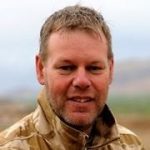
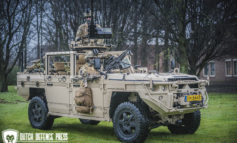
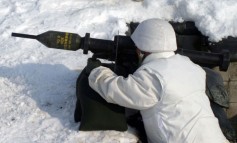
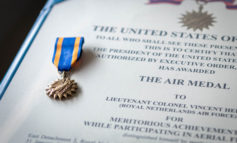
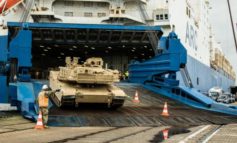
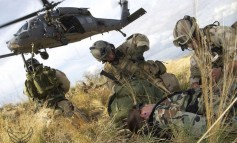



Leave a Reply